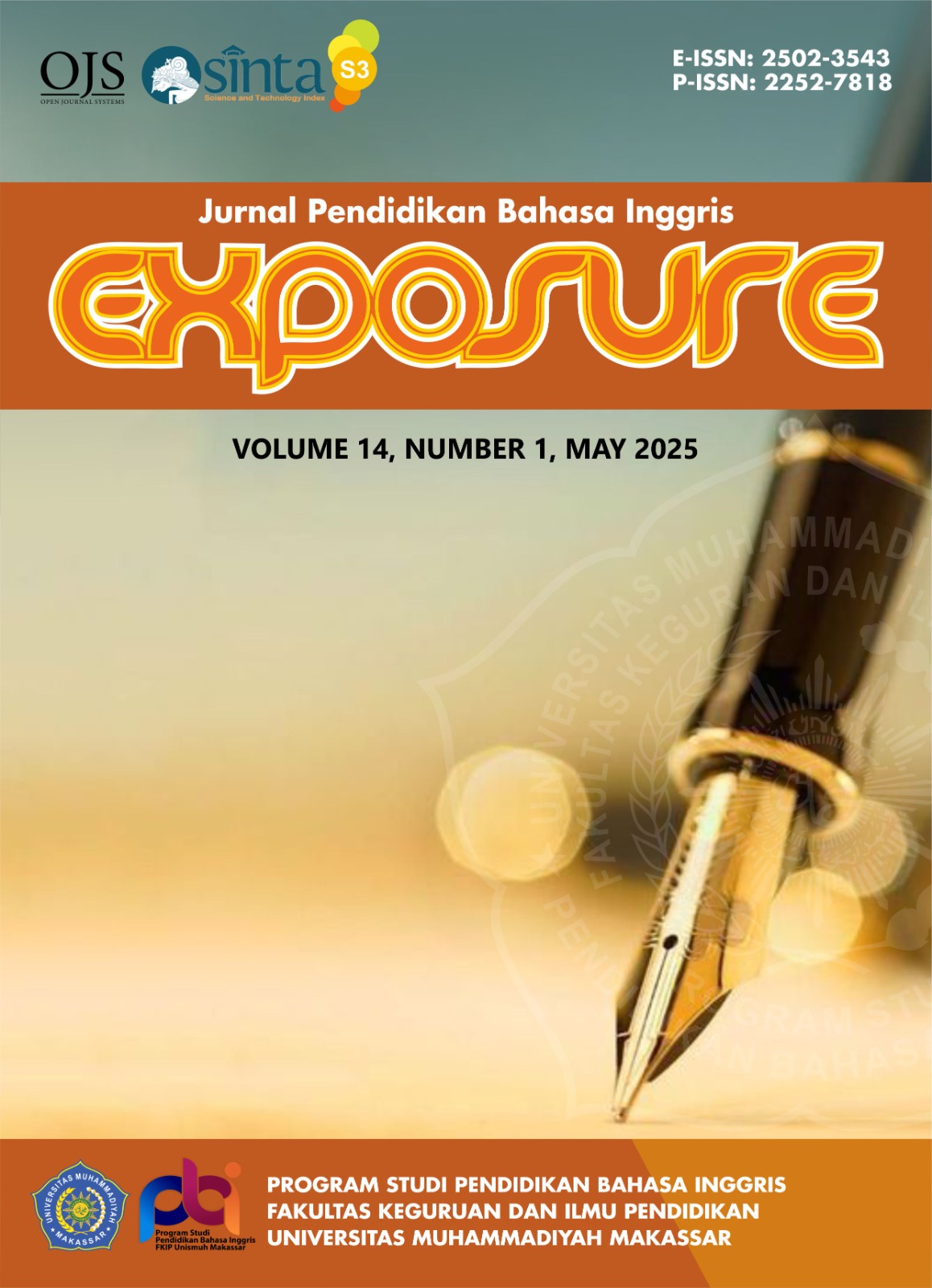FOSTERING STUDENTS’ VOCABULARY THROUGH BUSY PICTURES AT PAUD ZALFA NAQIYYA SAMARINDA
DOI:
https://doi.org/10.26618/exposure.v14i1.17293Keywords:
Busy Pictures, Vocabulary, kindergarten studentsAbstract
Vocabulary mastery is a crucial aspect of English language proficiency, yet many students struggle to understand and use vocabulary accurately. Visual media such as busy pictures are believed to support early childhood vocabulary development through visual stimulation and interactive engagement. Therefore, this study was conducted to determine the effectiveness of using busy pictures in improving vocabulary mastery among Group B students at PAUD Zalfa Naqiyya Samarinda. This research employed a quantitative method, involving a population of 32 students from Group B during the 2023/2024 academic year, with a sample of 13 students. The findings revealed that the average pretest score before treatment was 21.31, while the average post-test score after the use of busy pictures increased to 54. This represents a 32.69% improvement. The results indicate that busy pictures are an effective medium for enhancing students’ vocabulary mastery. Furthermore, the hypothesis testing showed that the null hypothesis (Ho) was rejected, and the alternative hypothesis (Ha) was accepted, confirming the positive impact of busy picture media on vocabulary acquisition.
Downloads
References
Cameron, L. (2001). Teaching Languages to Young Learners. Cambridge University Press.
Harmer, J. (2007). The Practice of English Language Teaching (4th ed.). Pearson Education Limited.
Jurasni. 2019. The Use of Hangman Game to Increase Students’ Vocabulary. Published Thesis. Makassar: UNISMUH Makassar
Juriah. 2018. The Use of Mass Media in Expanding Students’ Vocabulary. Published Thesis. Makassar: UNISMUH Makassar.
Mastin, J. D., & Vogt, P. (2011). Joint Attention and Vocabulary Development: An Observational Study of Mozambican Infants. In a Poster session presented at the 12th International Congress for the Study of Child Language, Montreal.
Pauwels, P. (2014). Jarvis, Scott and Michael Daller. 2013. Vocabulary Knowledge. Human ratings and automated measures. ITL-International Journal of Applied Linguistics, 165(2), 324-327.
Pinter, A. (2006). Teaching Young Language Learners. Oxford University Press.
Sugiyono, S. (2016). Metode Penelitian Kuantitatif Kualitatif dan R&D. Alfabeta.
Urbayati Chusnul, 2017. The Effect of Word Wall Media on Students’ Vocabulary Mastery At The Seventh Grade Of SMPN 5 Kediri in The Academic Year 2016/2017, (Online), (http://simki.unpkediri.ac.id/mahasiswa/file_artikel/2017/cad339e9e523b465e9418538688313d6.pdf, Accessed on 24th Agustus 2023).
Downloads
Published
Issue
Section
License
Authors who publish with this journal agree to the following terms:
In order to assure the highest standards for published articles, a peer review policy is applied. In pursue of the compliance with academic standards, all parties involved in the publishing process (the authors, the editors and the editorial board and the reviewers) agree to meet the responsibilities stated below in accordance to the Journal publication ethics and malpractice statement.
Duties of Authors:
- The author(s) warrant that the submitted article is an original work, which has not been previously published, and that they have obtained an agreement from any co-author(s) prior to the manuscript’s submission;
- The author(s) should not submit articles describing essentially the same research to more than one journal;
- The authors(s) make certain that the manuscript meets the terms of the Manuscript Submission Guideline regarding appropriate academic citation and that no copyright infringement occurs;
- The authors(s) should inform the editors about any conflict of interests and report any errors they subsequently, discover in their manuscript.
Duties of Editors and the Editorial Board:
- The editors, together with the editorial board, are responsible for deciding upon the publication or rejection of the submitted manuscripts based only on their originality, significance, and relevance to the domains of the journal;
- The editors evaluate the manuscripts compliance with academic criteria, the domains of the journal and the guidelines;
- The editors must at all times respect the confidentiality of any information pertaining to the submitted manuscripts;
- The editors assign the review of each manuscript to two reviewers chosen according to their domains of expertise. The editors must take into account any conflict of interest reported by the authors and the reviewers.
- The editors must ensure that the comments and recommendations of the reviewers are sent to the author(s) in due time and that the manuscripts are returned to the editors, who take the final decision to publish them or not.
Authors are permitted and encouraged to post online a pre-publication manuscript (but not the Publisher’s final formatted PDF version of the Work) in institutional repositories or on their Websites prior to and during the submission process, as it can lead to productive exchanges, as well as earlier and greater citation of published work (see The Effect of Open Access). Any such posting made before acceptance and publication of the Work shall be updated upon publication to include a reference to the Publisher-assigned DOI (Digital Object Identifier) and a link to the online abstract for the final published Work in the Journal.




